11 Tips for Engaging D&D 5e Plotlines Creation
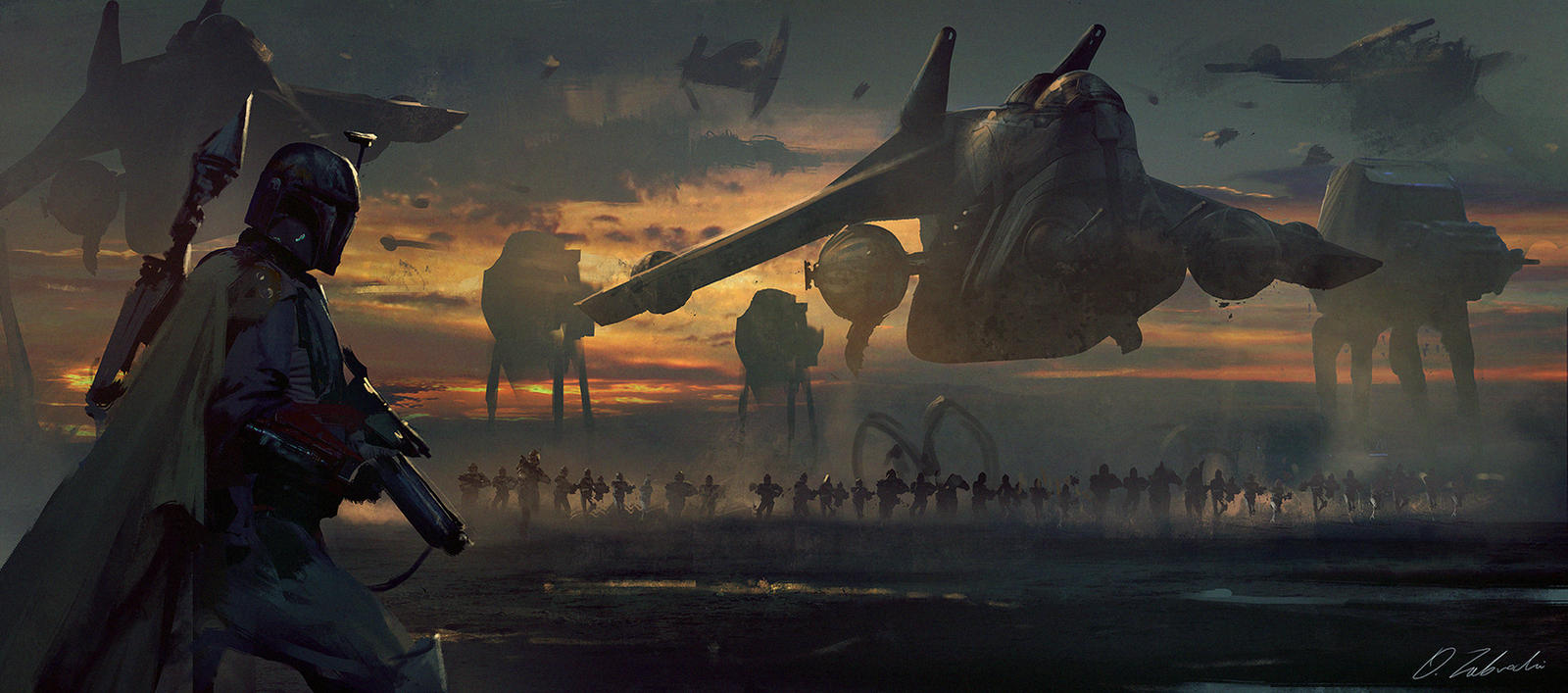
Greetings, fellow adventurers! I’m your resident Dungeon Master, here to transform your humdrum gaming sessions into unforgettable escapades.
Over the years, I’ve honed my skills in crafting captivating D&D 5e storylines, and I’m eager to impart my top 11 secrets to you.
Together, we’ll explore the depths of character development, intricate plot structures, and empowering player choices.
So, gather your dice and prepare to embark on an extraordinary journey that will have your players spellbound. Are you ready to roll into a world of boundless possibilities? Let’s begin!

Key Takeaways
- A well-crafted plot is the backbone of any captivating campaign narrative, driving the story forward and keeping players invested.
- Plot twists introduce surprising turns of events, keeping players on their toes and challenging their preconceived notions.
- Delving into character backgrounds provides insight into their motivations and drives, enriching roleplaying interactions and fostering deeper connections.
- Player choices play a pivotal role in shaping the story’s trajectory, immersing them in the narrative and elevating the gameplay experience.
- Embracing these elements empowers you to craft compelling campaign narratives that captivate players and leave a lasting impression.
Understanding D&D 5e Plot Structure
In my years of playing, I’ve found that understanding the structure of a D&D 5e plot isn’t just beneficial, it’s crucial for creating engaging campaign narratives. A solid plot is like a well-crafted symphony; it has rhythm, movement, and a crescendo that leaves players yearning for more.
One of the key elements I’ve learned to incorporate are plot twists. They’re like the sudden, sharp notes in a melody, jolting players out of their comfort zones, keeping them on their toes.
However, a plot twist isn’t just about surprising players. It’s about shaking up the status quo, challenging perceptions, and steering the story in a new, unexpected direction.
Another critical element is narrative foreshadowing. It’s the whisper of the flute before the full orchestra joins in; the hint of what’s to come.
This is a delicate art; give too much away, and you rob the plot twist of its power. Reveal too little, and the twist feels random, unconnected to the story.
But when done right, foreshadowing can give depth to the narrative, making the plot twist feel like a natural, yet surprising, progression of the story. This balance is what makes a D&D 5e plot truly engaging.
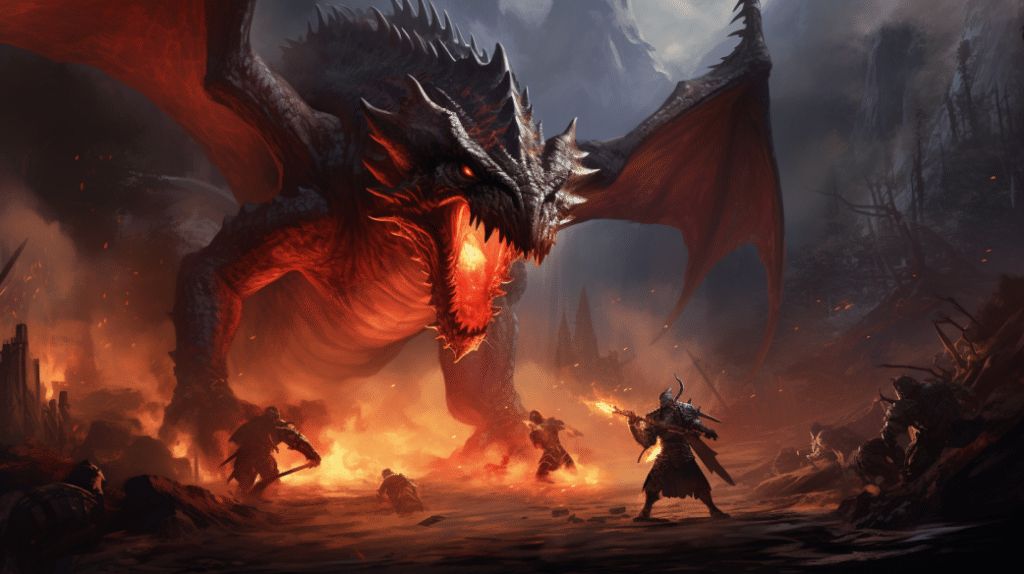
Importance of Character Backgrounds
Building on plot twists and narrative foreshadowing, character backgrounds play a crucial role in weaving a captivating D&D 5e plot. These backgrounds aren’t mere cosmetic additions or trivial details. They’re the heart and soul of a character, shaping their motivations and influencing roleplaying interactions in profound ways.
Consider an ex-soldier, haunted by a past war, now seeking redemption. This background lays the groundwork for character motivations, driving the plot forward.
Every decision, every action they take is fueled by their past, adding depth and dynamism to their plot. It’s not just about what they want—it’s about why they want it.
Character backgrounds also wield a tangible roleplaying influence. Imagine a party navigating a city once ruled by the soldier’s old nemesis.
Every alley could hold ghosts of their past, every encounter tinted with personal stakes. Suddenly, it’s not just a city—it’s a stage for tension, drama, and character growth.
In essence, rich character backgrounds breathe life into your plot, making it more compelling and immersive. They’re the unsung heroes of any D&D 5e plotline, and I’d argue they’re indispensable to the art of storytelling.
Building Suspenseful Story Arcs
As we shift our focus to the art of crafting suspenseful story arcs, we’re stepping into the realm of the unexpected, the mysterious, and the thrilling.
The beating heart of your campaign, the suspenseful arc, is a delicate dance of climactic moments, mystery, and pacing. I’m eager to share my insights on how to master this dance, creating a narrative that will keep your players on the edge of their seats.
Crafting Climactic Moments
Creating climactic moments in your D&D 5e plotlines isn’t just about big battles or shocking twists; it’s about carefully building suspense that keeps the players on the edge of their seats.
With character deaths, you can create unexpected heart-wrenching moments that shake up the status quo.
Don’t just kill off characters for shock value though; make it a meaningful part of the story that propels the plot forward.
Unpredictable twists, on the other hand, are the lifeblood of a suspenseful story. They keep players guessing, wondering what could possibly happen next. Keep these twists grounded in the world you’ve built, and they’ll feel like a natural, albeit shocking, part of the story.
Mystery in Arcs
Continuing from our exploration of climactic moments, let’s delve into the craft of building suspenseful story arcs—my personal favorite aspect of D&D 5e plotline creation.
A suspenseful arc hinges on unresolved mysteries. Weave these into your plot, tying them to character backstories or future encounters. Clue integration is key here. Subtle hints keep players guessing, their curiosity piqued.
Here’s a table to illustrate how to build suspense:
| Element of Suspense | Example |
| Hidden treasure | A cryptic map leads to a hidden island where a pirate’s treasure is buried. |
| Missing townsfolk | Strange tracks and abandoned houses suggest that the townsfolk have vanished without a trace. |
| Ancient curse | An old prophecy foretells a terrible fate that will befall the town unless a certain ritual is performed. |
| Mysterious villain | A shadowy figure is seen lurking in the shadows, leaving behind strange symbols that no one can decipher. |
| Secret society | A hidden group of people with secret knowledge and hidden agendas works from the shadows to manipulate events. |
In this way, you create a web of intrigue, drawing players deeper into your world. Now, let’s transition into our next topic—pacing your story.
Pacing Your Story
In the realm of D&D plotlines, after weaving a web of intrigue with unresolved mysteries and integrated clues, it’s time to focus on pacing your story for maximum suspense.
The narrative rhythm, like the beating heart of your tale, should fluctuate, quickening to heighten dramatic tension then slowing to allow for character development and plot progression.
Inject moments of high stakes, where characters’ decisions could alter the course of events – this keeps players on their toes. Juxtapose these with quieter scenes, where players can digest information and plan their next move.
Remember, suspense isn’t about constant action but about the promise of action. It’s the lingering question, ‘what happens next?’
Now, let’s delve into how to incorporate player choices to make your story truly interactive.
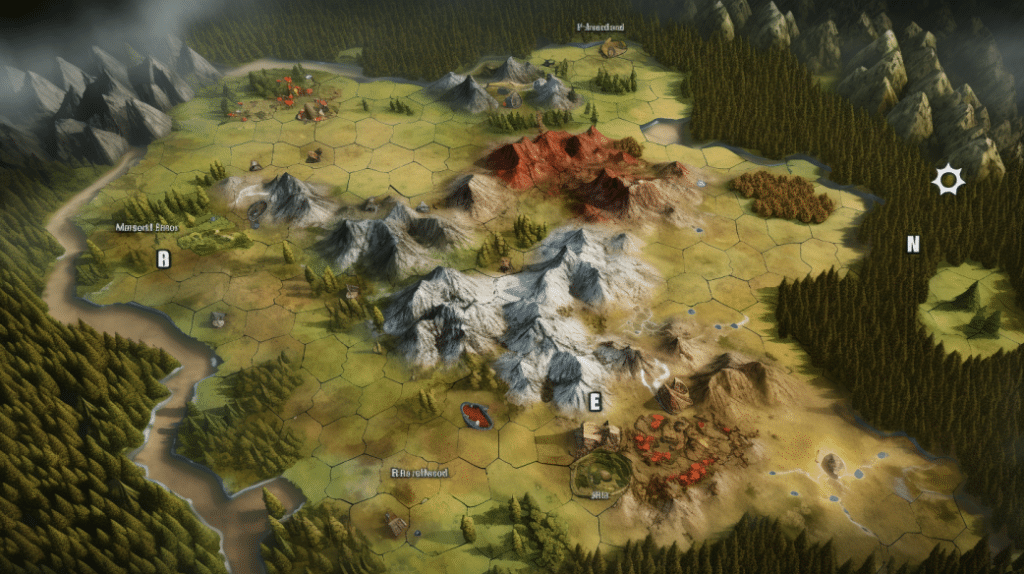
Incorporating Player Choices
Let’s turn our focus to the lifeblood of any D&D campaign – the player choices.
As a Dungeon Master, the art of weaving player decisions into your plotlines can transform your campaign from a linear story to an immersive, dynamic world.
We’ll explore how to effectively incorporate player choices and the impact this has on plot development.
Impact of Choices
As a dungeon master, I’ve found that incorporating player choices into the storyline dramatically enhances the gameplay experience. The key is to create meaningful choice repercussions that ripple throughout the campaign.
If a player chooses to save a town from goblins, the villagers could later assist them on their journey. Conversely, if they ignore the threat, they may find the town razed when they return.
This kind of branching narrative not only adds depth to the story but also instills a sense of agency in the players. They’re not just passive observers; their actions have tangible consequences.
Dynamic Plot Development
Building on the concept of choice repercussions, the dynamic plot development in a D&D campaign relies heavily on incorporating these player choices into the narrative in a meaningful way.
For me, this is where the magic of interactive storytelling shines, as I use plot improvisation to craft a tale that unfolds uniquely for each group of players.
Utilizing NPC Interactions
Drawing from my own experience, I’ve found that effectively using Non-Player Character (NPC) interactions can significantly enhance the depth and immersion of your D&D 5e plotlines. There’s no denying the value of NPC Personality Development in this process.
I often start by sketching out the distinct traits and quirks of my NPCs. Are they timid, brash, cunning, or noble-hearted? This helps breathe life into the characters and makes interactions with them more engaging for players.
The next step is NPC Motivations Analysis. What drives each NPC? Is it a desire for power, wealth, revenge, or perhaps love?
Understanding an NPC’s motivations can lead to rich, layered interactions and plot twists. It’s not merely about having an NPC provide a quest; it’s about having them react and evolve based on their motivations and the choices players make.
What’s more, I’ve discovered that unexpected interactions between NPCs and players can be a goldmine for plot development. Encouraging players to dig deeper into these interactions can reveal hidden alliances, spark rivalries, or even uncover secret histories.
Tying in Character Goals
In creating an engaging D&D 5e plotline, it’s vital to incorporate the individual goals of your player characters. These personal objectives can drive character development and promote goal progression, effectively enriching the narrative journey.
Here’s a 4-step guide on how to tie in character goals:
1. Identify each character’s goals: Start with understanding what your characters want. Are they seeking revenge? A lost artifact? Knowledge? This initial understanding is crucial.
2. Weave these goals into the plot: Find ways to intertwine character objectives with your overarching plot. This creates a personal stake for each character in the story’s outcome.
3. Create opportunities for goal progression: Design encounters, quests, and events that allow characters to take steps towards their goals. These don’t always have to be victorious – setbacks can also lead to character development.
4. Reward goal achievements: When a character achieves a goal, it should have a tangible impact. This can be in the form of new abilities, items, or simply character growth.
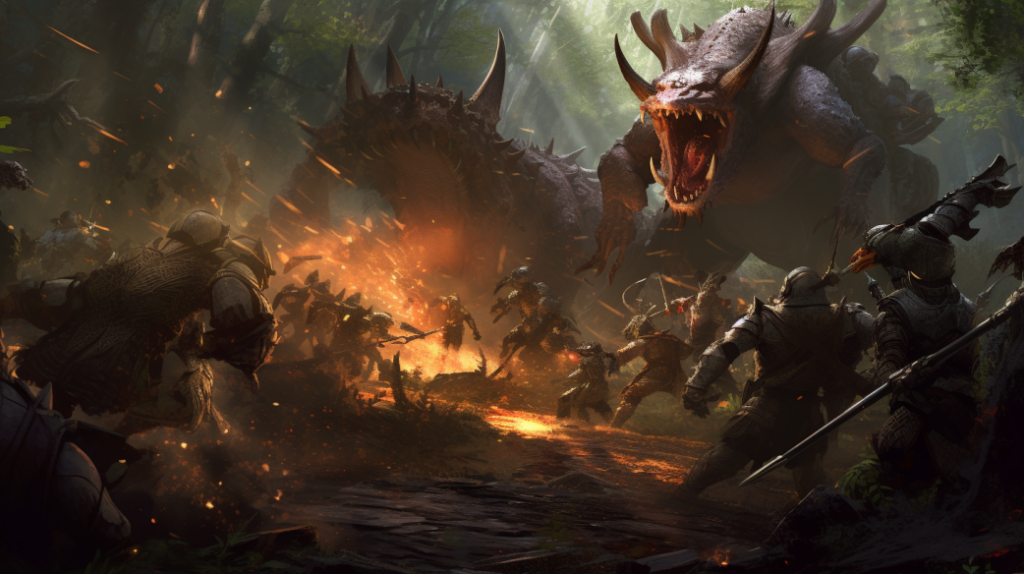
Keeping Campaigns Dynamic
Maintaining a dynamic campaign is one of the most challenging yet rewarding aspects I’ve found in crafting D&D 5e plotlines. It’s all about keeping the players on their toes, ensuring the world around them is alive and ever-changing. Character development and setting exploration are key players in this.
The table below illustrates how these two elements can keep your campaign vibrant.
| Character Development | Setting Exploration |
| Unforeseen alliances | Discovery of new lands |
| Personal quest progression | Changing political landscapes |
| Evolution of character abilities | Unravelling of world history |
| Dealing with personal consequences | Encountering diverse cultures |
Character development isn’t just about leveling up. It’s about forming unexpected alliances, progressing personal quests, evolving abilities, and dealing with the consequences of their actions.
Setting exploration, likewise, is more than moving through maps. It’s about the discovery of new lands, the changing political landscapes, the unraveling of the world’s history and encountering diverse cultures.
When you weave these elements together, you create a campaign that’s not only dynamic but also immersive. It’s a living, breathing world that your players will be eager to return to, time and time again.
Balancing Challenge and Reward
As we venture further into the labyrinth of plotline creation, I want to shed light on a crucial aspect: Balancing Challenge and Reward.
There’s a delicate dance between risk and reward, balancing the thrill of perilous encounters with the satisfaction of aptly rewarding success.
Let’s unpack this exquisite art, where the right equilibrium can transform your campaign into a riveting narrative that players can’t resist.
Risk Vs Reward
While I’m crafting a D&D 5e plotline, it’s crucial to strike a balance between risk and reward to keep the adventure engaging and satisfying for players. This involves considering reward repercussions and risk mitigation.
1. Reward repercussions: The rewards must be appealing, but not so grand that they overshadow the challenge. Too hefty a reward might make the game unbalanced.
2. Risk mitigation: The risks should be real, but not insurmountable. I ensure that extreme risks have a way out or can be mitigated.
3. Balance: The risk and reward need to be balanced. If the risk outweighs the reward, the game might feel frustrating; if the reward outweighs the risk, it can feel dull.
4. Player satisfaction: Ultimately, the aim is to keep players motivated and satisfied. A well-balanced game will do just that.
Pacing Difficult Encounters
In plotting challenging encounters, I focus on pacing to ensure that the difficulty level enhances the gaming experience instead of hindering it. The trick is to strike a balance between encounter diversity and combat strategy.
Rewarding Success Adequately
After setting the pace for challenging encounters, it’s crucial I then turn my attention to rewarding success adequately, striking a balance between the difficulty of the challenge and the reward offered. A well-crafted success celebration can be a game-changer.
Here are my four golden rules:
1. Ensure Victory Implications: Make sure the reward reflects the magnitude of their victory. A dragon’s hoard for slaying a goblin won’t do.
2. Variety is Key: Don’t limit rewards to gold or items. Social status, property, or information can be equally enticing.
3. Personalize: Tailor rewards to characters’ backstories or goals. This adds depth and player engagement.
4. Tease Future Adventures: Include hints or plot devices in rewards. A mysterious key or cryptic map can lead to the next great adventure.
Crafting Memorable Villains
I’ve found that a compelling villain can truly elevate your D&D 5e plotline, making it unforgettable for your players.
The villain’s motivations should be complex and multidimensional, a web of desires and fears that drives them to commit heinous acts.
It’s not enough for them to want power or revenge – perhaps there’s a tragic backstory, a twisted sense of justice, or a desperate need to protect something they cherish.
Evil alliances are another layer to your villain’s character. Are they lone wolves, or do they command legions of followers?
Maybe they’ve struck a dangerous pact with a powerful entity, or they’re secretly manipulating other characters into doing their dirty work. These alliances can be the source of dramatic plot twists and can create tension among the party members.
Crafting memorable villains is all about the details. Their appearance, their mannerisms, the way they speak – every element should be carefully designed to leave a lasting impression.
Remember, your players won’t remember a villain because of their stats or abilities, but for the stories you weave around them.
I promise you, put effort into crafting your villains, and your players will never forget them.
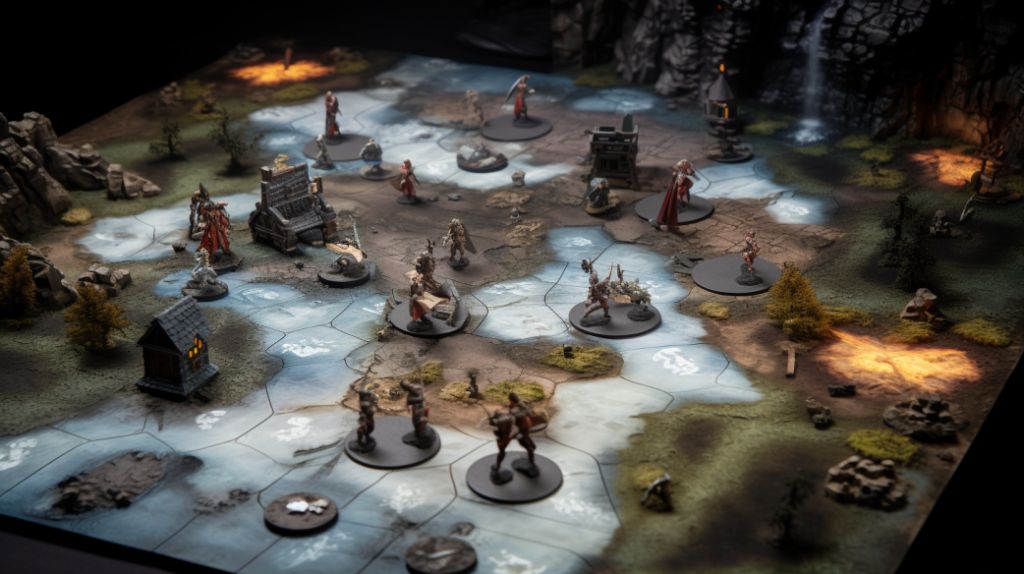
The Role of Worldbuilding
Building on the importance of crafting memorable villains, let’s now tackle the crucial role that worldbuilding plays in creating engaging D&D 5e plotlines. Worldbuilding is essentially the canvas on which you paint your story, and it’s where the cultural complexity of your universe comes to life.
1. Geography and Climate: Start by drawing your world’s map. The geography and climate will shape the societies and cultures within your world.
2. Cultural Complexity: Different races, religions, and societal norms add depth to your world. Remember, cultures aren’t monolithic; there should be differences and conflicts within them.
3. Magic System Exploration: Magic should be a fundamental part of your world, not an afterthought. Its rules, limitations and effects on society should be clearly defined.
4. History and Lore: The past events shape the present. Embedding a rich history adds layers to your world, making it feel alive and real.
In essence, the world you create is the stage on which your characters perform. It’s the backdrop against which your villains plot, your heroes struggle, and your story unfolds.
It’s not just about creating a place, but a living, breathing entity that interacts with your characters and plotlines.
Evolving Plotlines with Level Progression
Often, I find myself carefully threading the progression of my plotlines with the leveling up of characters, ensuring that the narrative evolves naturally and remains engaging for my players.
As the characters grow in power and abilities, so must the challenges they face, creating a sense of accomplishment and progression.
Character role play is a crucial aspect of this. I shape the plot so that it responds to the characters’ evolving personalities and capabilities. As they level up, they might become well-known heroes in the world, attracting both adoration and enmity.
Or perhaps their increased power brings unintended consequences, causing them to question their actions and decisions. This further deepens their role play potential and keeps the story fresh and exciting.
Setting immersion also plays a key role in evolving plotlines. As the characters level up, they venture into new, dangerous locales that reflect their growth.
The quaint village they started in might give way to mysterious forests, treacherous mountains, or grand cities filled with political intrigue.
Each setting presents unique challenges and opportunities, pushing the characters to adapt and keeping the players engaged.
As the characters level up, so does the world around them.
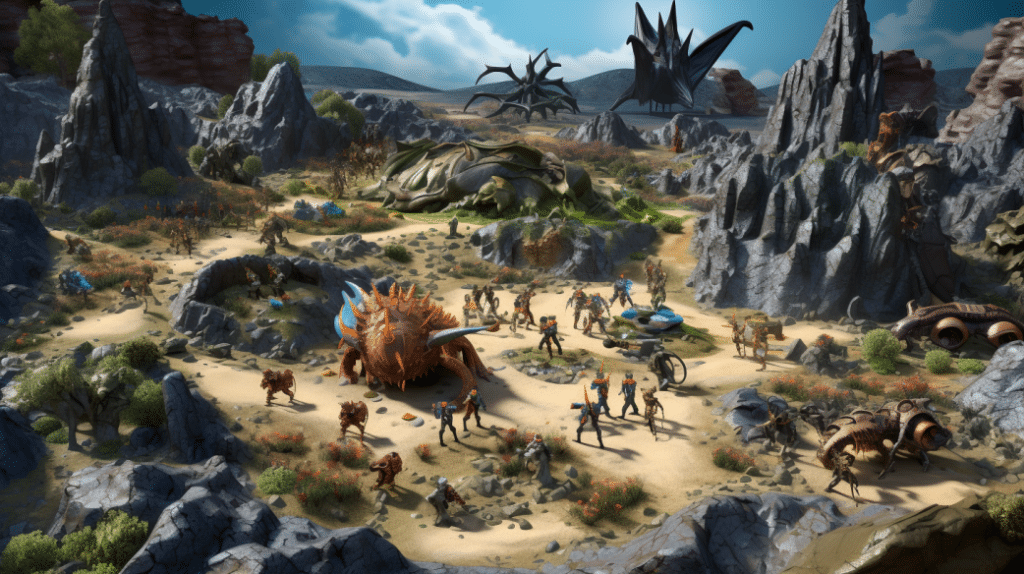
Frequently Asked Questions
How Can I Incorporate Humor into My D&D 5e Plotlines?
I’d suggest developing comedic characters with quirky traits and incorporating funny narrative elements. It’s all about timing and character interactions, so don’t be afraid to play around with humorous situations and dialogue.
What Tips Are There for Creating Plotlines for Non-Combat Focused Campaigns?
In creating non-combat focused campaigns, I’d emphasize non-combat challenges and role-playing encounters. I’d weave puzzles, political intrigue, and social dynamics into my plotlines to engage players beyond traditional combat scenarios.
How Can I Integrate a Player’s Real-Life Experiences Into the D&D 5e Plotlines?
I’d delve into their character backstories, intertwining real-life experiences using real world analogies. It’s about making their past part of the story, adding depth and authenticity to their D&D 5e campaign experience.
Are There Any Strategies for Managing Player Disagreements Within the Storyline?
Sure, managing player disagreements within the storyline takes finesse. I foster conflict resolution by encouraging open dialogue. Understanding player dynamics helps me guide disagreements towards enriching the story, not derailing it. It’s a delicate balance.
What Are Some Ways to Handle Unexpected Player Actions That Completely Derail the Plotline?
When unexpected twists occur due to player actions, I use improvisation techniques. I’ll quickly adapt the storyline, weaving their actions into a new, unexpected path. It’s all about flexibility and quick thinking in storytelling.
